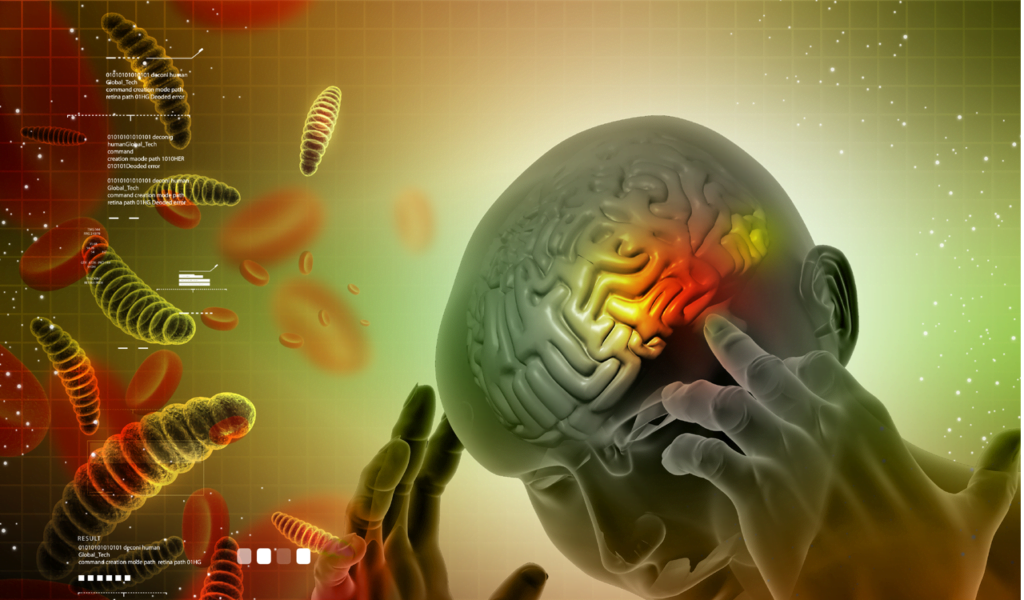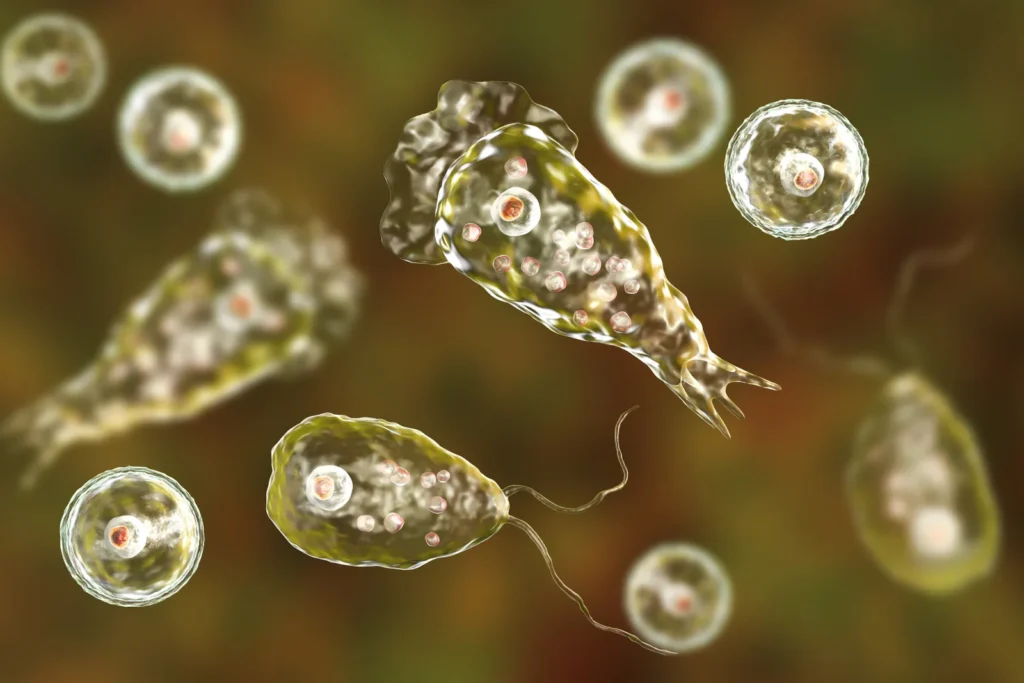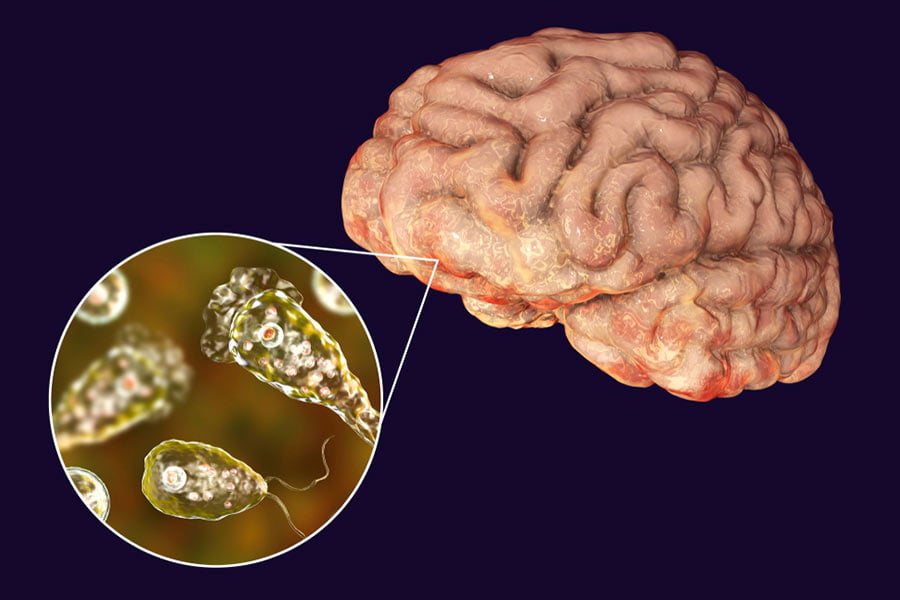Brain-Eating Amoeba: Friends, brace yourselves as we delve into the alarming situation in Kerala, where a brain-eating amoeba has recently claimed the lives of several young individuals. This dangerous organism, known scientifically as Naegleria fowleri, has caused panic and concern. Here’s everything you need to know about this deadly threat and how to stay safe.
What is the Brain-Eating Amoeba?
The brain-eating amoeba, or Naegleria fowleri, is a single-celled organism that lives in warm freshwater and soil. It’s notorious for causing a rare but severe brain infection called primary amoebic meningoencephalitis (PAM). The amoeba enters the body through the nose, typically while swimming in contaminated water, and then travels to the brain, causing catastrophic damage.

Recent Cases in Kerala
A 14-year-old boy tragically died at a private hospital in Kerala on Wednesday after contracting primary amoebic meningoencephalitis. The infection was traced back to a small pond where he had been swimming. This marks the third case reported in Kerala since May, with previous cases also resulting in fatalities.
How Does the Infection Occur?
The brain-eating amoeba infects individuals by entering through the nose, especially during water activities like swimming in warm freshwater bodies. It’s important to note that the infection cannot spread through drinking contaminated water or from person to person.

Symptoms to Watch Out For
The initial symptoms of PAM can be easily mistaken for common illnesses, making early detection challenging. Here’s what to look out for:
- Early Symptoms: Headache, fever, nausea, and vomiting.
- Advanced Symptoms: Stiff neck, confusion, seizures, hallucinations, and coma.
According to the US Centers for Disease Control and Prevention (CDC), the progression from initial symptoms to coma and death can be rapid, often within 1 to 18 days.
Treatment Challenges
Currently, there are no definitive treatments for primary amoebic meningoencephalitis. Doctors typically use a combination of drugs, including amphotericin B, azithromycin, fluconazole, rifampin, miltefosine, and dexamethasone. However, these treatments have not proven consistently effective.
Previous Incidents
The recent death is not an isolated incident. In May, a five-year-old girl from Munniyoor, Malappuram, succumbed to the same infection after bathing in a river. Additionally, a 12-year-old boy from Ramanattukara, Malappuram, remains in critical condition after developing symptoms following a swim in a pond.

Preventive Measures
To avoid such tragic outcomes, here are some safety tips:
- Avoid Swimming in Warm Freshwater: Especially in areas where the water is stagnant and temperatures are high.
- Use Nose Clips: While swimming in freshwater bodies, using nose clips can prevent water from entering your nose.
- Stay Informed: Pay attention to local health advisories and avoid swimming in water bodies that have been flagged for contamination.
Friends, the emergence of this deadly amoeba highlights the importance of taking precautions while enjoying water activities. Stay safe and informed to protect yourself and your loved ones from this rare but dangerous infection.
For more information, please click on this link. To stay connected with us, follow our WhatsApp Channel.











